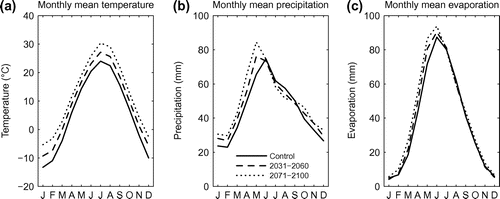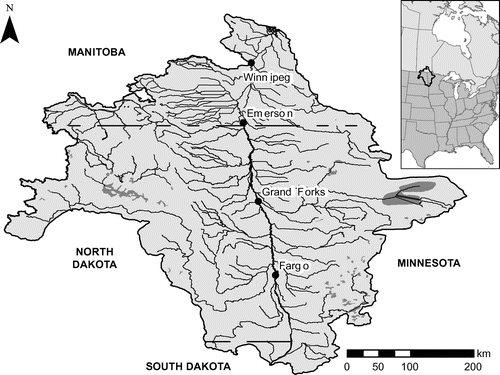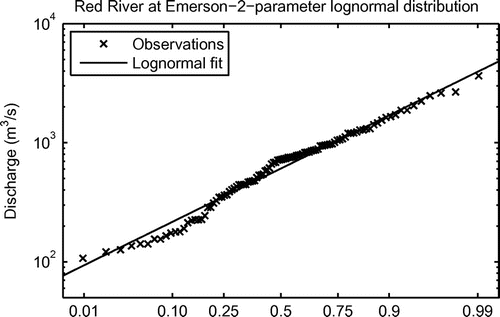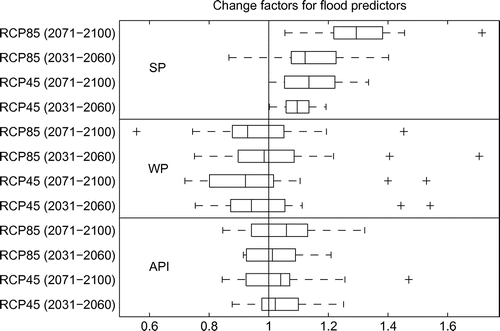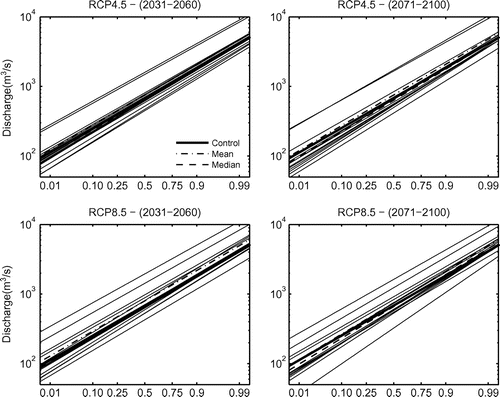Figures & data
Figure 2. Spring peak discharge for the Red River at Emerson for the period 1913–2014. Years where the maximum annual flow did not occur in the spring are indicated with markers.
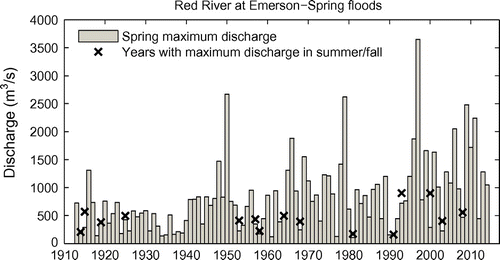
Table 1. Table of flood predictors used in the study.
Figure 4. Performance of the flood prediction model in Equation (Equation3(3) ) for the period 1940–1999. (a) Predicted versus observed spring peak discharge at Emerson. (b) Normal probability plot of residuals from the regression model in Equation (Equation3
(3) ).

Table 2. Global climate models from the Coupled Model Intercomparison Project – Phase 5 (CMIP5) ensemble used in the study.
Figure 5. Delta values for annual precipitation and mean annual temperature in the Red River basin. For precipitation (P), delta values represent the ratio of the mean of future annual precipitation (average of the 30-year periods) to the mean of annual precipitation for the control simulation. For temperature (T), delta values represent differences between future mean annual temperature and control mean annual temperature. The points correspond to the 16 global climate models listed in Table . RCP = Representative Concentration Pathways.
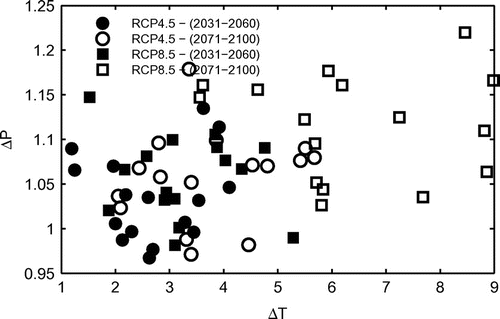
Figure 6. Monthly ensemble means of control simulation and future simulations for (a) temperature, (b) precipitation and (c) evaporation. Each curve is obtained by averaging over the 16 global climate models in Table .
